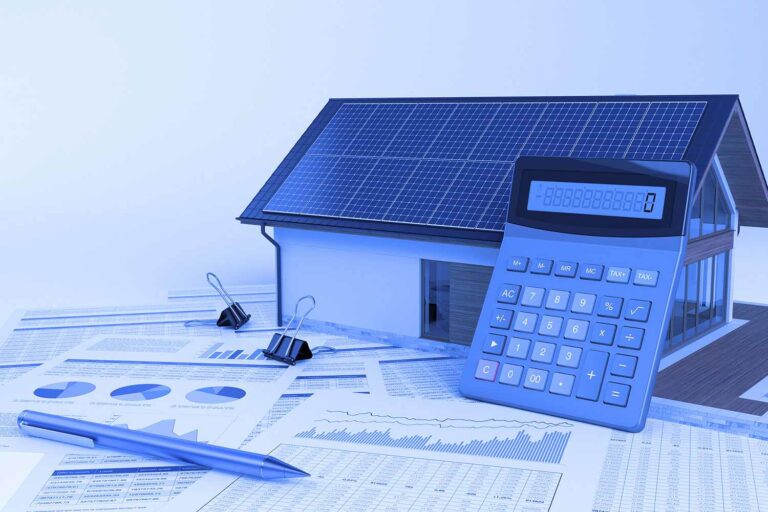
The solar industry, a beacon of sustainable energy solutions, has been witnessing remarkable growth in recent years. As global concerns about climate change intensify, the push for renewable energy sources, particularly solar power, has gained momentum. In this blog, we will explore the potential effects of declining interest rates on the solar industry, delving into how this financial trend might shape the landscape for solar investments, installations, and the broader renewable energy sector.
- Cost of Capital and Affordability:
One of the primary ways in which declining interest rates impact the solar industry is through changes in the cost of capital. As interest rates decrease, the cost of borrowing for solar projects also reduces. This is particularly significant for solar developers and investors who often rely on financing to fund large-scale solar installations.
Lower interest rates make solar projects more affordable, as the cost of financing decreases. This affordability can translate into a surge in solar projects, from residential rooftop installations to utility-scale solar farms. As a result, more individuals and businesses may find it economically viable to invest in solar energy, thereby accelerating the adoption of renewable technologies.
- Boost for Residential Solar Installations:
The residential solar sector stands to benefit significantly from declining interest rates. As the cost of financing for solar panels decreases, homeowners are more likely to explore solar installations for their properties. Lower interest rates can make solar loans and financing options more attractive, encouraging homeowners to make the switch to solar energy.
Additionally, decreased financing costs can lead to more favorable terms for solar leases and power purchase agreements (PPAs), making solar energy accessible to a broader demographic. This increased affordability may trigger a surge in residential solar installations, further contributing to the decentralization of energy production and reducing dependence on traditional power grids.
- Expansion of Commercial and Industrial Solar Projects:
In the commercial and industrial sectors, declining interest rates can spur the development of larger-scale solar projects. Businesses looking to invest in solar energy solutions, such as solar panels for warehouses, factories, or office buildings, may find the reduced cost of capital enticing. This can lead to an uptick in corporate sustainability initiatives and the implementation of solar projects on a commercial scale.
Lower financing costs can also make solar power purchase agreements more attractive for businesses, as they seek to secure a stable and cost-effective source of renewable energy. The result could be a substantial increase in the deployment of solar arrays on commercial properties, contributing not only to environmental sustainability but also to long-term cost savings for businesses.
- Impact on Utility-Scale Solar Farms:
The utility-scale solar sector, responsible for large solar farms that feed energy into the grid, is not immune to the influence of interest rates. Declining rates can have a profound impact on the feasibility and financial viability of these ambitious projects. Lower financing costs make it more cost-effective for developers to undertake utility-scale solar initiatives.
This is particularly relevant as governments and utilities aim to increase the share of renewable energy in their energy portfolios. Lower interest rates can incentivize the development of more utility-scale solar farms, contributing to the overall capacity of clean energy generation and supporting the transition away from fossil fuels.
- Investor Confidence and Market Growth:
Interest rates play a crucial role in shaping investor sentiment and confidence in the solar market. As rates decline, investors may view the solar industry as an increasingly attractive and stable investment. The lower cost of capital can lead to higher returns on solar projects, attracting institutional investors, private equity, and other financial entities to the renewable energy sector.
This influx of investment can catalyze market growth, driving innovation, research and development, and further reducing the overall cost of solar technology. A robust solar market with ample investor support can pave the way for more ambitious projects and technological advancements, ultimately benefiting the industry as a whole.
- Challenges and Considerations:
While declining interest rates present numerous opportunities for the solar industry, there are challenges and considerations that must be acknowledged. Interest rates are just one factor influencing the economics of solar projects, and other market dynamics, regulatory environments, and global economic conditions also play significant roles.
Moreover, the pace at which interest rates decline or the duration of a low-interest-rate environment can impact long-term planning for solar projects. Developers and investors need to carefully assess the broader economic landscape to make informed decisions about the timing and scale of solar investments.
Conclusion:
The interplay between interest rates and the solar industry is a complex but impactful relationship. As interest rates decline, the solar sector stands to benefit across residential, commercial, and utility-scale domains. Affordability, increased investment, and a surge in solar projects are among the positive outcomes.
However, it is essential to approach this optimistic scenario with a nuanced perspective, considering external factors that influence the industry. By navigating these challenges and leveraging the opportunities presented by declining interest rates, the solar industry can continue its trajectory as a key player in the global transition toward sustainable and renewable energy sources. The future appears bright for solar energy, and the financial landscape, shaped by interest rates, may very well accelerate the journey towards a cleaner and more sustainable energy future.
